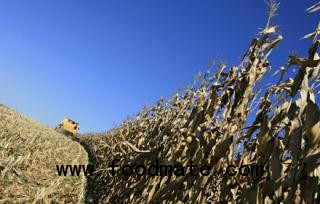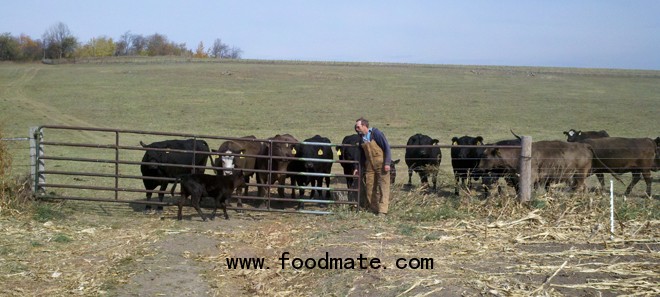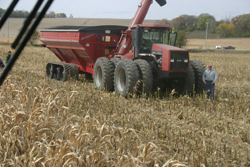
For instance, Mike Sulzer, a livestock and row-crop farmer from Monroe, Wisconsin, is doing the disappointing math from drought losses in hay and crop production in 2012. "Whatever corn I harvest and hay I bale, I have to feed it. I'll have nothing left to sell," Sulzer says.
In a normal production year, the southern Wisconsin farmer puts up enough hay to feed 350 bales to his 125-head cow herd and an additional 500-700 round bales to sell on the market.
With averaging a corn yield of 170 bu./acre, Sulzer would have been able to profit from selling into a high-priced corn market. But, not this year. His extra corn will be used to feed his cattle. "That's a big kick in the pants, when you can't take advantage of the market," Sulzer says.
Another example of a short crop is reflected by the length of time it is taking to fill semis and grain carts. In normal circumstances, it takes five acres to fill a semi full of grain, says Tyler Brugger, an area farmhand. "This year, it is taking 10 acres or more. And, this year, the grain cart sits a lot," Brugger says.

For a lot of farmers in the southern part of the dairy state, this year's harvest will garner only half the crop they are used to. As a result, dairyman have had to use more corn than normal to make silage. This is increasing feed costs, as the livestock farmers have to buy higher moisture corn from their neighbors to fill winter feed supply needs.
And the impact of the short crop season is extending to the buyers of grain. Dan Roe, Pleasant Grain elevator general manager, in Monticello, Wisconsin, says the short crop-year will mean his regular customers will bring less corn into his business. "This year's corn and soybean crops are vary variable. Though the soybeans (averaging around 40 bu./acre) may be a bit better than expected, corn yields are ranging from 50-180 bushels per acre. This causing concerns with livestock feeders and marketing plans.
"Most of my customers didn't get carried away with forward contracting. Everybody is trying to sell a little bit and then deciding to just hang on and hope for something better (price-wise) down the road," Roe says.

Further down the road, near Shullsburg, Wisconsin, Chad Teasdale wondered if the corn he is harvesting this week will get close to an average yield in the low 100's, when his southwestern Wisconsin ground can normally pull a 180 bu./acre average.
"There are some good spots in the fields, when the monitor jumps to near 200, but then other parts of the field will yield 39 bushels. I just don't understand it. It appears we may be headed for a 115 bu./acre average this year," Teasdale says. "As far as marketing, we take a more traditional approach. We will store this crop, maybe sell a little in the winter and then wait to see where this market goes," Teasdale says.
With local seed experts saying southwest Wisconsin fields need 12-inches of rain, before the ground freezes, to replenish subsoils, Teasdale sees many reasons to remain bullish on the corn market.





